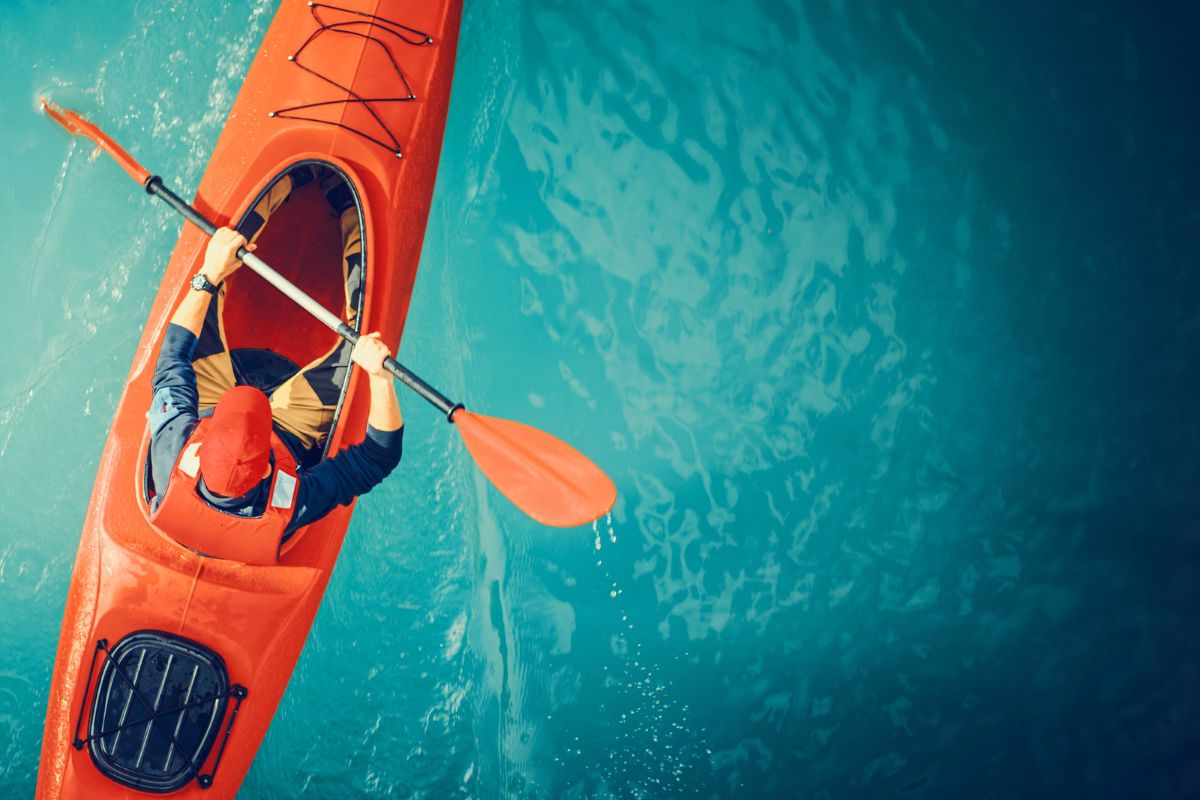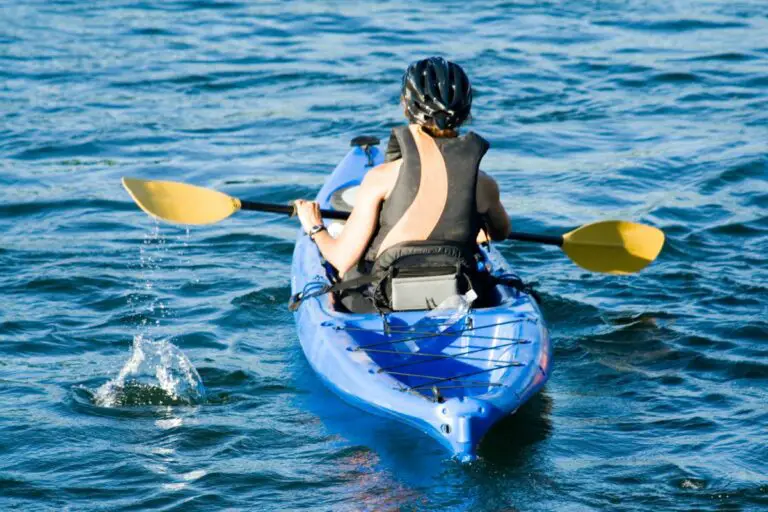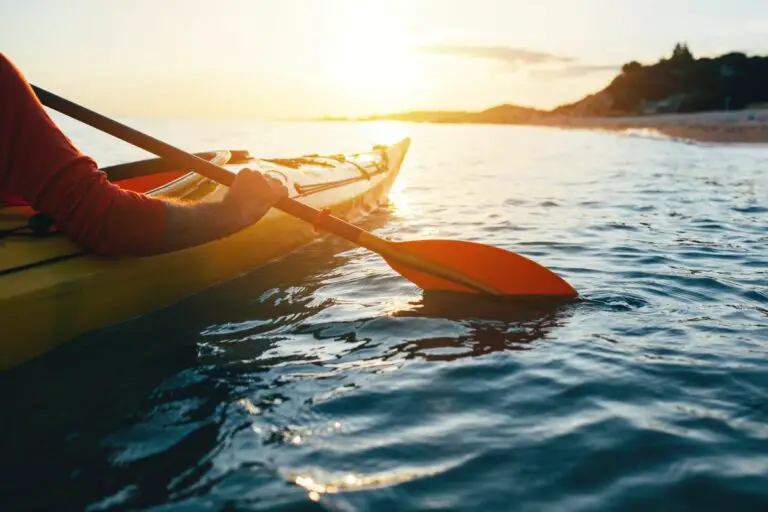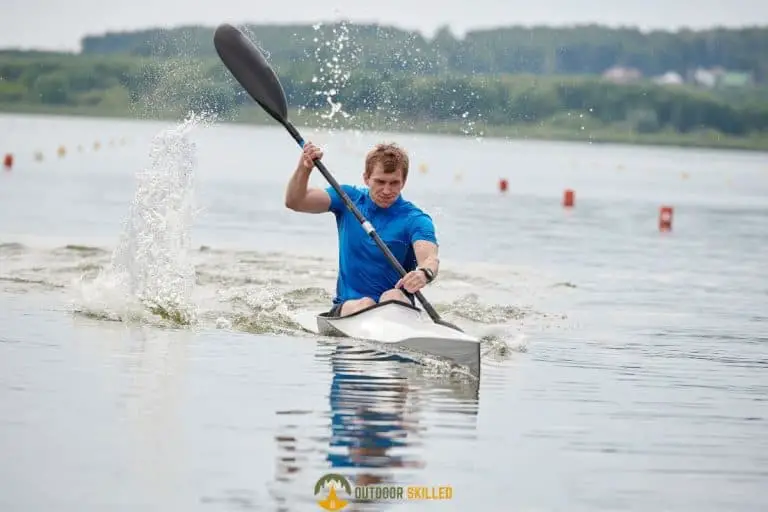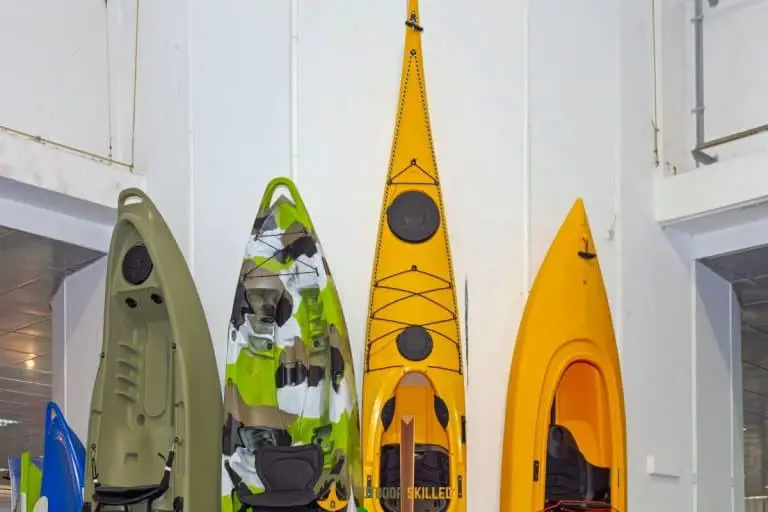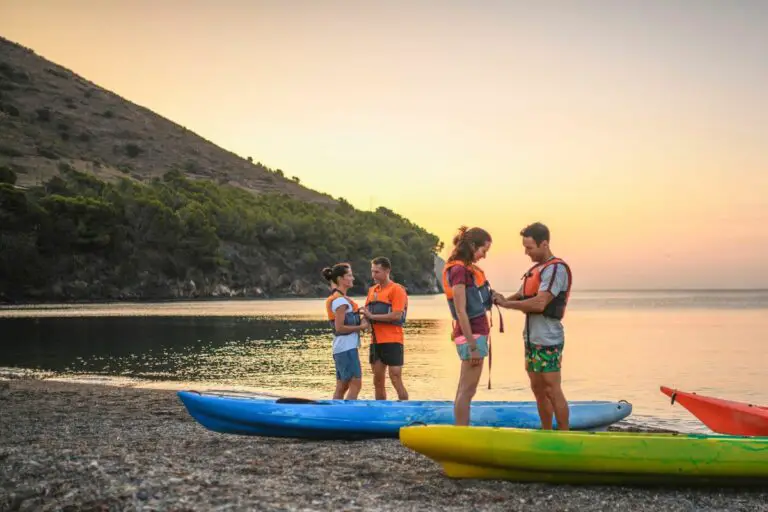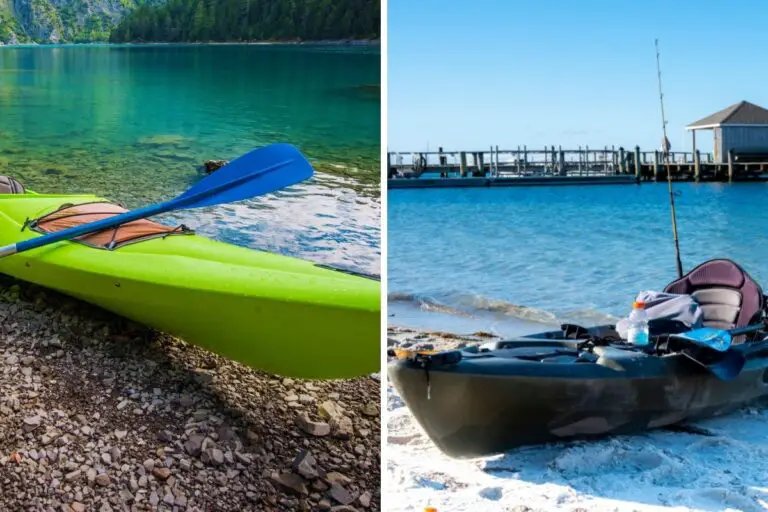What Is the Difference Between Touring Kayaks and Sea Kayaks?
Whether you’re a seasoned kayaker or just getting started, choosing the right type of kayak is crucial to ensure a safe and enjoyable experience on the water.
Two popular types of kayaks are touring kayaks and sea kayaks, and while they may look similar at first glance, they have distinct differences in their design and intended use.
So, what’s the difference between touring kayaks and sea kayaks?
Touring kayaks are longer and narrower than sea kayaks, making them faster and more efficient over longer distances. Even though both kayaks are designed for use on open water, touring kayaks are better suited for calm conditions compared to sea kayaks, which are ideal for extreme conditions.
Keep reading to learn more about the difference between touring kayaks and sea kayaks, when to use a touring kayak, and how to choose the right one for you.
Table of Contents
The Difference Between Touring Kayaks and Sea Kayaks
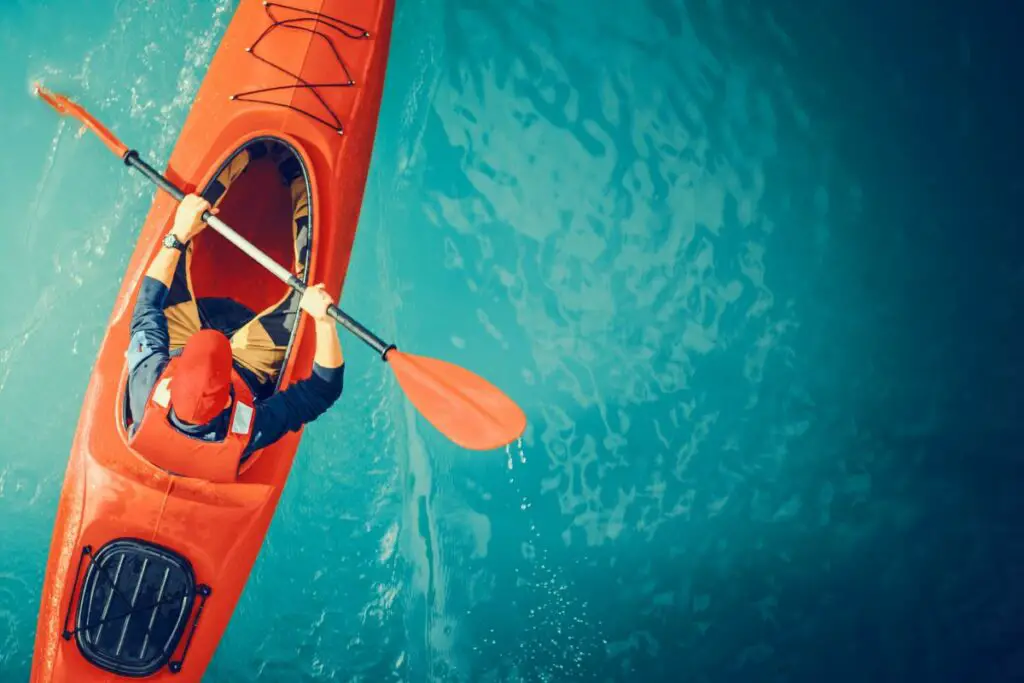
Touring kayaks and sea kayaks are both designed for paddling in open water, but they have some key differences in their construction and intended use.
Touring kayaks are generally longer and narrower than sea kayaks, which makes them faster and more efficient over longer distances. In addition, they are designed with a flatter bottom and less rocker (upward curvature of the hull) than sea kayaks, which provide greater stability and tracking in calm conditions.
On the other hand, sea kayaks are designed for more extreme conditions, as they are usually shorter and wider than touring kayaks, making them more maneuverable in strong currents or winds.
They also have more advanced hull shapes and features, such as chines (sharp edges along the hull), skegs or rudders, and deck lines for secure rescues.
If you’re interested in learning more about the differences between other types of kayaks, you can check out my guide on the difference between fishing kayaks and sea kayaks here.
Can You Use A Touring Kayak in the Sea?
It is possible to use a touring kayak in the sea. In fact, many touring kayaks are designed to be used in open water, including the sea. However, it’s important to keep in mind that touring kayaks and sea kayaks are designed with different characteristics that make them better suited for different conditions.
When to Use A Touring Kayak?
As mentioned before, touring kayaks are designed to be efficient over long distances and provide stability and comfort for extended periods of time, which makes them ideal for exploration or fitness purposes.
In addition, they usually have a large storage capacity, making them ideal for multi-day trips where you need to carry camping gear, food, and water.
They are typically better suited for calm to moderately rough conditions, such as lakes, rivers, and sheltered coastal waters. While they can handle some chop and waves, they may not perform as well in more extreme conditions found in the open sea. I highly recommend taking a moment to learn about the conditions in which you should not go kayaking here.
If you plan to use a touring kayak in the sea, it’s important to choose a kayak that is appropriate for the conditions you will be paddling in. You should also make sure to have the necessary equipment and take proper safety precautions.
Are There Different Types of Touring Kayaks?
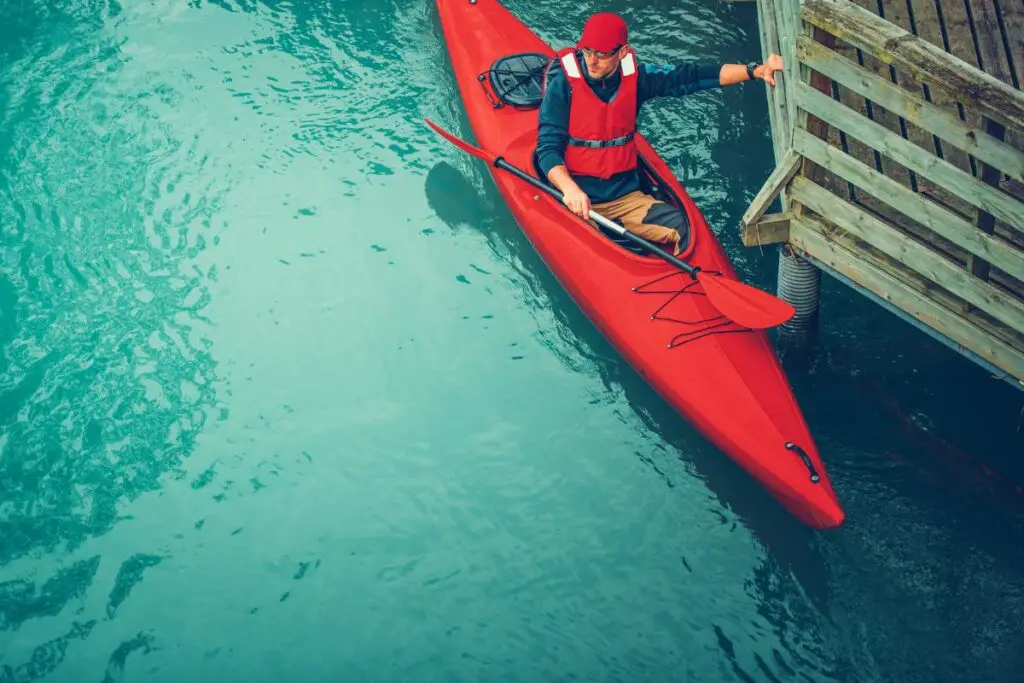
There are different types of touring kayaks designed for various paddling conditions and styles. Let’s take a quick look at some of the most common types:
- Sit-in touring kayaks: These are traditional kayaks with a cockpit that the paddler sits inside. They are ideal for longer paddling trips in open water and can handle rougher conditions.
- Sit-on-top touring kayaks: These kayaks are similar to sit-in kayaks, but the paddler sits on top of the kayak with no cockpit. They are popular for recreational paddling and warm weather conditions.
- Inflatable touring kayaks: These kayaks are made of durable PVC or nylon material and can be inflated for use. They are lightweight and easy to transport, making them popular for travel and camping trips.
- Expedition touring kayaks: These kayaks are designed for long-distance paddling trips and can handle rough waters and heavy loads. They have extra storage space and are often equipped with rudders or skegs to aid in steering.
- Performance touring kayaks: These kayaks are designed for speed and agility and are often used for racing or high-performance paddling. They are typically longer and narrower than other touring kayaks and are more responsive to the paddler’s movements.
How to Choose the Right Touring Kayak?
Before you purchase a touring kayak, there are some factors you need to keep in mind to make sure you’re choosing the right one. So, let’s take a quick look at these factors:
- Type of Touring: Consider the touring you plan to do, such as day trips or multi-day expeditions, and the conditions you plan to paddle in, such as calm lakes or open oceans. Choose a kayak that is designed for the type of touring you will be doing.
- Size and Weight: Make sure the kayak is the right size for your body and weight. A kayak that is too small can be uncomfortable and unstable, while a kayak that is too large can be difficult to maneuver.
- Material: Touring kayaks can be made from a variety of materials, including plastic, fiberglass, and carbon fiber. Each material has its own benefits and drawbacks, so choose a material that fits your budget and performance needs.
- Features: Look for features that fit your paddling style, such as storage compartments for gear, adjustable footrests for comfort, and a rudder or skeg for tracking and maneuverability.
- Brand and Price: Research different brands and models of touring kayaks, read reviews, and compare prices. Choose a kayak from a reputable brand that fits your budget and provides good value for your money.
- Test Drive: If possible, try out different kayaks before making a purchase. Demo days, rental opportunities, and friends’ kayaks are all great options for trying out different models and styles.
Ultimately, the right touring kayak for you depends on your preferences and paddling goals. So, take the time to research and test out different options to find the kayak that best fits your needs.
Its length is 12.5 feet, a width of 26 inches, and a weight capacity of 300 pounds, making it stable and responsive in choppy waters. The kayak’s unique design also incorporates a large cockpit that allows for easy entry and exit and ample space for storing gear.
Another standout feature of the Tsunami 125 is its adjustable Phase 3 AirPro XP seat, which provides excellent support and comfort for long paddling sessions.
So, overall this kayak combines stability, comfort, and agility in a sleek and efficient design, making it an excellent choice for paddlers who want to confidently explore the open ocean.
Quick Tips for Using A Touring Kayak in the Sea
Using a touring kayak in the sea requires proper preparation and knowledge of the conditions. So, here are some tips for using a touring kayak at sea:
- Check the Weather: Before heading out to sea, always check the weather conditions. Avoid paddling in strong winds, rough waves, or stormy conditions.
- Wear a Life Jacket: Always wear a properly fitting life jacket when paddling in the sea. A life jacket can help keep you afloat in case of an emergency.
- Bring Essential Gear: Bring essential gear such as a paddle leash, signaling devices, navigation tools, and a first-aid kit. You should also carry enough food and water to sustain you for the duration of your trip.
- Use a Skeg or Rudder: If your touring kayak has a skeg or rudder, use it to maintain direction and control in rough water or strong currents.
- Keep Your Paddle Close: Always keep your paddle close to you, using a paddle leash if necessary. Losing your paddle in the sea can be dangerous.
- Stay Alert: Stay alert and aware of your surroundings at all times. Look out for other boats, wildlife, and changing weather conditions.
- Practice Your Skills: Practice your paddling skills before heading out to sea. This can include bracing, rolling, and self-rescue techniques.
- Paddle with a Partner: It’s always a good idea to paddle with a partner, especially when paddling in the sea. This can provide extra safety and support in case of an emergency.
By following these tips and taking proper precautions, you can safely and confidently use a touring kayak in the sea.
Kayak your way to Freedom
- On a budget? Check out the best fishing kayaks under $500 here and the best Fishing Kayaks under $1,000 here. Or Check the best Cheap Kayaks here.
- Going fishing? Here are the best Ocean fishing kayaks, and here are the best River Fishing Kayaks.
- You can also find the best Fly Fishing Kayaks here and the best Bass Fishing Boats here.
- A bit experienced? Check out the best modular kayaks here and the best tandem fishing kayaks here.
- Looking for something special? Check out my favorite Ducky kayaks here.
- Navigate your way with these awesome and beginner-friendly Kayak compasses.
- Going Hunting? These Duck hunting kayaks will give you an unfair advantage!
- Have a need for speed? These motorized kayaks will get you moving.
- Protect yourself from the sun with these Kayak shades, and make your kayak more comfortable with these Kayak seats.
- Keep your feet dry and warm with these superb Kayaking shoes.
- Going Kayaking in cold water? Stay warm with these Kayaking gloves.
- Paddle Less, Fish More with the Best Kayak Motors
- Looking to get a trolling motor on your kayak? Check out the best kayak trolling motor mounts here.
If you like this article, please share it or pin it, you can find the share buttons below. We will really appreciate it ❤️

